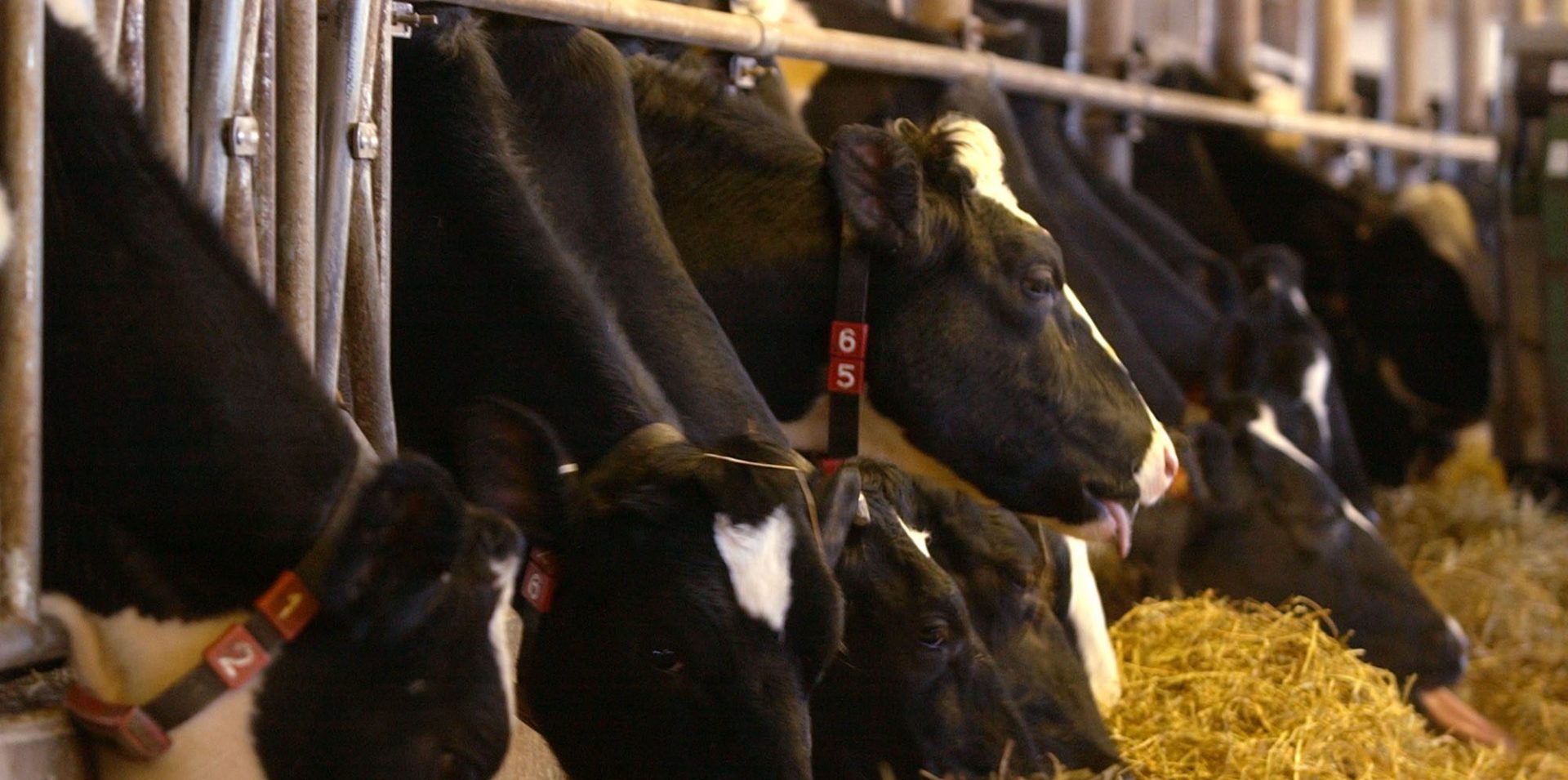
FILE: A herd of Holstein cows on dairy farm in Pennsylvania.
Bradley C Bowe / AP Photo

FILE: A herd of Holstein cows on dairy farm in Pennsylvania.
Bradley C Bowe / AP Photo

Bradley C Bowe / AP Photo
FILE: A herd of Holstein cows on dairy farm in Pennsylvania.
Aaron Simpson is a fourth generation dairy farmer at Lone Oak Farm in Westmoreland County. Alongside his family, he runs the farm with its 80 cattle and the store where they sell their fresh dairy products.
In recent years, they’ve been concerned about the pinch from inflation and wholesale milk prices that haven’t tracked with rising retail prices. Around them, small family farms continue to close or sell to larger operations. The number of dairy farms in Pennsylvania fell by 8% from 2017 to 2022, according to the most recent census from the U.S. Department of Agriculture.
It’s against this backdrop that the H5N1 bird flu has latched onto the dairy industry in the United States. While the virus affects birds, it’s known to jump to other mammals. In March, scientists found it in cattle in the U.S. Since then, it’s spread to 60 herds and infected three dairy workers who had mild symptoms.
The virus has not been detected in Pennsylvania. But a new study from the University of Pittsburgh shows that the virus remains stable and infectious on the surfaces of commercial dairy equipment and in unpasteurized milk for at least an hour.
“Dairy workers are most at risk because they’re right at the forefront of where these cows are,” said Valerie Le Sage, research assistant professor of microbiology and molecular genetics at the University of Pittsburgh and lead author of the study.
However, the overall risk for the general public, including dairy workers, remains very low, according to the U.S. Centers for Disease Control and Prevention. Dairy farmers, veterinarians, state and federal agencies have been working to get ahead of the virus — to stop the spread and put detailed plans in place in case the virus crosses into Pennsylvania.
For now, Simpson isn’t concerned about the bird flu. “This is not something that’s really been on the radar,” Simpson said. “I know about it. On the periphery, people are concerned with it. But the regulations for dairy production are so stringent, there’s really nothing to be concerned about.”
Farmers must follow strict sanitation procedures on a daily basis, according to Ernest Hovingh, director of the Animal Diagnostic Laboratory at Penn State University. The pasteurization process kills most viruses, including the bird flu, in the milk, according to the U.S Food and Drug Administration.
These procedures ramp up when there’s a sick cow in the herd. Cows must be milked even when they’re ill — but they’re milked last, and the entire line is sanitized and workers dispose of the sick cow’s milk.
Early warning signs of a sick cow include not eating or producing less milk than usual. If there’s bird flu on a farm, it usually spreads quickly, according to Hovingh. It’s not usually a case of a single sick cow. “If I see all of a sudden that I have eight cows that are dropping the amount of feed that they’re eating and are dropping in milk production, that’s a pretty big signal,” Hovingh said. “Hey, I better call my veterinarian. And then the veterinarian would decide if they need to call the state vet’s office.”
So far, the bird flu in the U.S has been spread from herd to herd. “It seems that the biggest risk factor is moving a cow from a herd that is infected to a herd that is not infected,” Hovingh said. “So one of the really, really big control points that we keep emphasizing to farmers is you really don’t want to be moving any cows into your herd from Michigan or from Texas or any areas that are currently affected.”
The USDA requires testing lactating cows for the virus before they can move across state lines. Any cow that enters Pennsylvania has to produce a negative test.
If a cow on a farm in Pennsylvania tests positive, there’s a plan in place. The state would put the herd under a quarantine. The animals can’t move to another farm while the cows are sick, milk from healthy cows must be pasteurized and the farm has to have an official biosecurity plan in place so that “you’re not, having visitors come onto the farms and then go back to their own farm without washing their boots and changing their clothes and things like that,” Hovingh said.
In light of the recent research, Le Sage suggests dairy workers use masks, face shields and gloves around milking equipment. And the Pennsylvania Department of Agriculture is offering free personal protective equipment for farm workers.
If farmers suspect they have a case of the bird flu in their herd, they can get free testing from the lab at Penn State. And starting on July 1, the USDA will offer financial assistance to dairy producers if cattle test positive for the virus to help cover some of the cost of the lost milk.
“We need to be careful,” Hovingh said. “But at this point, the risk to milkers in Pennsylvania dairy herds appears to be extremely low because the virus does not appear to be here at all.”
The days of journalism’s one-way street of simply producing stories for the public have long been over. Now, it’s time to find better ways to interact with you and ensure we meet your high standards of what a credible media organization should be.